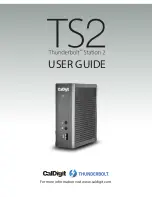
14
2. Avoid radiant heat transfer from buildings and structures. In general,
install the sensor array at least 5ft (1.5m) from any building, structure,
ground, or roof top.
3. Avoid wind and rain obstructions. The rule of thumb is to install the
sensor array at least four times the distance of the height of the tallest
obstruction. For example, if the building is 20ft (6m) tall, install 4 x (20 – 6)’
= 56ft (17m) away. Use common sense. If the weather station is installed
next to a tall building, the wind and rain will not be accurate.
4. Wireless Range. The radio communication between display console
and transmitter in an open field can reach a distance of up to 330ft (100m),
assume there are no interfering obstacles such as buildings, trees, vehicles,
high voltage lines. Wireless radio signals will not penetrate metal buildings.
Most wireless applications will only reach up to100ft (30m) due to building
obstructions, walls and interference.
5. Radio interference such as PCs, radios or TV sets can, in the worst
case, entirely cut off radio communication. Please take this into
consideration when choosing display console or mounting locations.
4.3 Best Practices for Wireless Communication
Wireless communication is susceptible to other interference, such as
distance, walls and metal barriers. We recommend the following best and
useful practices for trouble-free wireless communication.
1.
Electro-Magnetic Interference (EMI)
. Keep the console several feet
away from computer monitors and TVs.
2.
Radio Frequency Interference (RFI).
If you have other 433 MHz
devices and communication is intermittent, try turning off these other
devices for troubleshooting purposes. You may need to relocate the
wireless transmitters or receivers to avoid intermittent communication.
3.
Line of Sight Rating.
This device is rated at 300ft line of sight (no
interference, barriers or walls) but typically you will get 100ft maximum
under most real-world installations, which include passing through barriers
or walls.















































